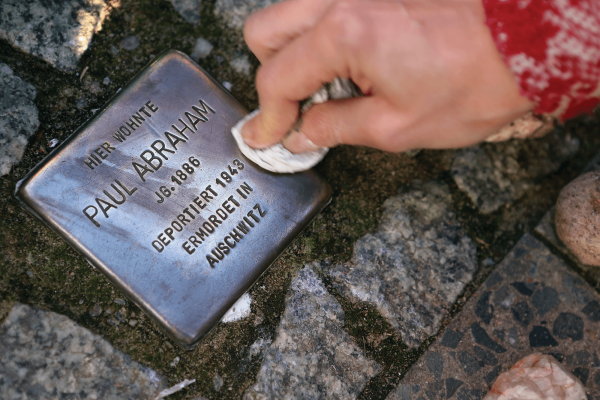I AM TERRIFIED of tripping. Thanks to a couple memorable tumbles over the years—the most recent of which involved a face-plant while on a run—I always double-knot my shoelaces and look down at my feet when I walk. Remaining steady and stable is always in the back of my mind.
But on a trip to Berlin in 2017, I found myself repeatedly tripping over something in the ground. The source of my stumbling, I soon learned, were Stolpersteine, which translates literally to “stumbling stones,” or more metaphorically, “stumbling blocks.” Stolpersteine are cobblestone-sized bronze plaques embedded in streets and sidewalks throughout Europe, each slightly raised above ground level and engraved with the name and life dates of a Holocaust victim, including murdered Jews, members of the LGBTQ+ community, Sinti and Roma people, people with physical or intellectual disabilities, and other ethnic and political minorities.
These commemorative stones are part of an ongoing art project, installed at the last place each person lived or worked before falling victim to Nazi crimes. Above each engraved name are the words “hier wohnte,” or “here lived,” serving as a reminder that this person did not build their life just anywhere, but right here. Each day they walked on this ground.
Each is unique
THE IDEA FOR Stolpersteine began in 1991, when artist Gunter Demnig painted a white line through the streets of Cologne to trace the deportation of 1,000 Sinti and Roma who were forced out of the city just 50 years prior. “An old lady stopped by and scolded my work, insisting there had never been any Gypsies in Cologne,” said Demnig. Her denial prompted Demnig to find a way to more permanently preserve the memory of those killed in the Holocaust.
Read the Full Article

